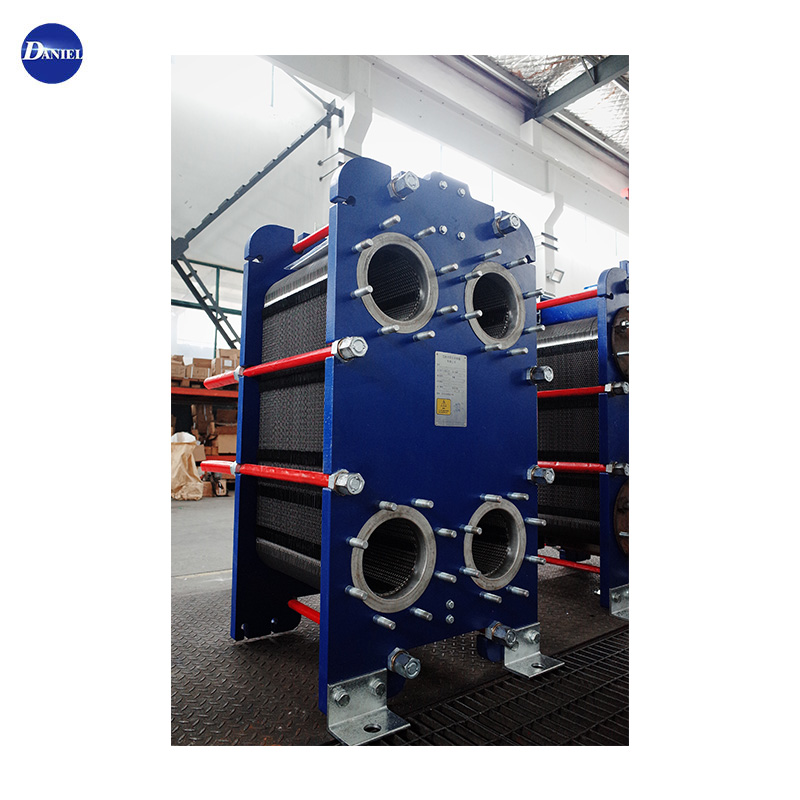
 English
English  Español
Español Português
Português русский
русский Français
Français 日本語
日本語 Deutsch
Deutsch tiếng Việt
tiếng Việt Italiano
Italiano Nederlands
Nederlands ภาษาไทย
ภาษาไทย Polski
Polski 한국어
한국어 Svenska
Svenska magyar
magyar Malay
Malay বাংলা ভাষার
বাংলা ভাষার Dansk
Dansk Suomi
Suomi हिन्दी
हिन्दी Pilipino
Pilipino Türkçe
Türkçe Gaeilge
Gaeilge العربية
العربية Indonesia
Indonesia Norsk
Norsk تمل
تمل český
český ελληνικά
ελληνικά український
український Javanese
Javanese فارسی
فارسی தமிழ்
தமிழ் తెలుగు
తెలుగు नेपाली
नेपाली Burmese
Burmese български
български ລາວ
ລາວ Latine
Latine Қазақша
Қазақша Euskal
Euskal Azərbaycan
Azərbaycan Slovenský jazyk
Slovenský jazyk Македонски
Македонски Lietuvos
Lietuvos Eesti Keel
Eesti Keel Română
Română Slovenski
Slovenski मराठी
मराठी Srpski језик
Srpski језик
The advantages of Plate Heat Exchanger
2024-01-30
Plate heat exchangers are essential equipment in many industries. These devices provide an efficient and cost-effective way to transfer heat from one fluid to another. With their compact design and superior heat transfer capabilities, plate heat exchangers are becoming increasingly popular in various industries and applications.
The construction of plate heat exchangers consists of a series of corrugated plates, which are sealed together. The corrugations create turbulence, promoting heat transfer between the fluids flowing through the channels. The heat exchanger plates are arranged in a pattern, maximizing the heat transfer surface area in a relatively small space.
One of the major advantages of plate heat exchangers is their high heat transfer efficiency. With the corrugated plate design and increased heat transfer surface area, plate heat exchangers can provide up to six times the heat transfer rate of conventional shell-and-tube heat exchangers. This can lead to significant cost savings in large-scale industrial applications.
In addition to their high heat transfer efficiency, plate heat exchangers offer other advantages as well. Their compact size and low weight make them ideal for applications where space is at a premium. They are also easier to install and maintain, with fewer parts to handle and assemble than traditional heat exchangers.
Another advantage of plate heat exchangers is their versatility. They can be used in a wide range of applications, from heat recovery and energy recycling to food processing and pharmaceutical production. They can handle a variety of fluids, including corrosive and highly viscous materials, making them suitable for use in challenging industrial environments.
Plate heat exchangers also offer energy savings in various industries. They are commonly used in industrial processes where heat recovery is possible. By using a heat exchanger in a process, the heat from the process fluid can be transferred to another fluid, which can then be used for another process or as a heating source. This can result in significant energy savings and cost reductions for companies.
Another application for plate heat exchangers is in the heating, ventilation, and air conditioning (HVAC) industry. HVAC systems rely on heat exchangers to transfer heat between the indoor and outdoor environments. The efficiency of these systems is improved by using plate heat exchangers, which can provide better heat transfer at a lower cost than conventional heat exchangers.
Finally, plate heat exchangers offer environmental benefits, especially when used in combination with renewable energy sources. The use of plate heat exchangers in heat recovery systems can reduce the reliance on fossil fuels and other non-renewable energy sources. This can help companies to reduce their carbon footprint and meet their sustainability goals.
Overall, plate heat exchangers are an excellent choice for many industries and applications. With their high heat transfer efficiency, compact size, versatility, and energy-saving capabilities, they offer multiple advantages over traditional heat exchangers. As companies across different sectors are striving to improve their efficiency and sustainability, plate heat exchangers are playing a crucial role in achieving those goals.






